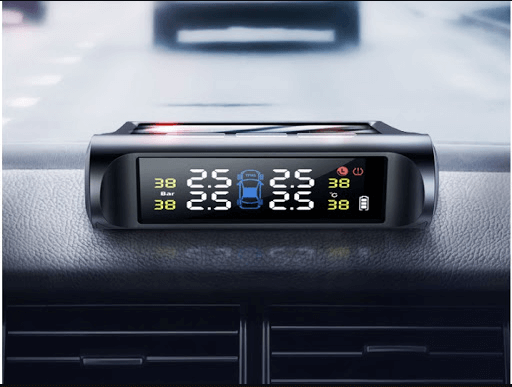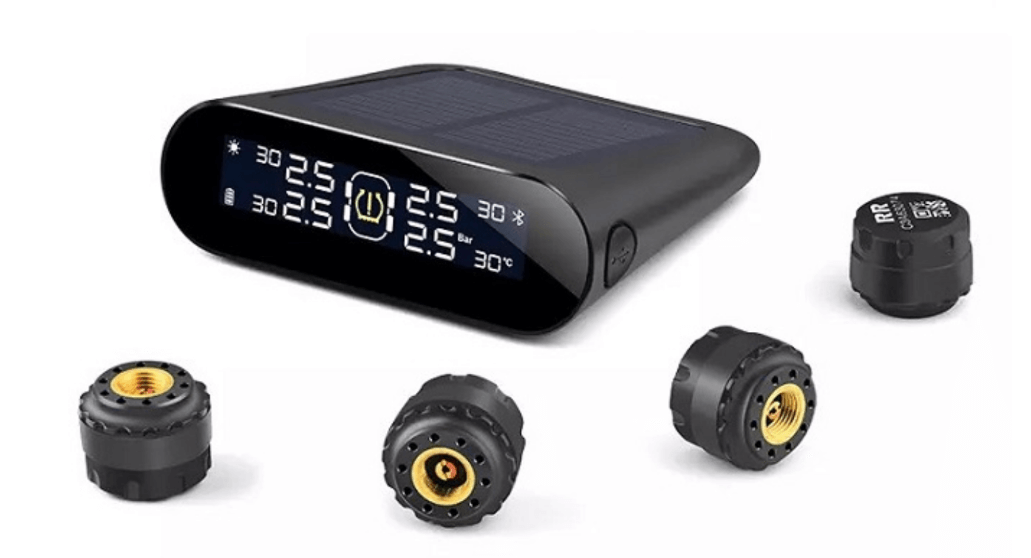Tire pressure shows how under or underinflated a car tire is. This affects the safety of driving, the durability of tires as well as the driver's driving experience. When the tires reach the standard pressure, the possibility of damage and wear is minimized, avoiding the risk of an accident on the road. When the tire is underinflated, the tire pressure is low, the friction force between the tire and the road is large, and the speed cannot reach the maximum level. In contrast, when the tire is too inflated, the car is prone to shocks and skids, especially when passing through rough roads.
Therefore, regularly monitoring tire pressure is necessary to promptly adjust the pressure at the standard level. A tire pressure monitoring system is a device that supports the popular tire pressure monitoring today. The following article will answer the questions of drivers who are still wondering whether to install a tire pressure monitoring system in their car or not.
1. What is a tire pressure monitoring system (TPMS)?
TPMS is a tool to monitor and display car tire pressure. Sensor devices include a sensor unit mounted directly at the tire and a parameter display placed on the vehicle. The sensor will record the car's tire pressure, which is displayed on the car's central screen. Thus, when observing the screen while driving, the drivers will notice whether the tire pressure is at the standard level or not. The installation of tire pressure sensors is usually done by technicians with technical expertise at car maintenance centers. In addition, drivers can also install sensors themselves for those that need a simple operation.

The display mounted on the car shows the tire pressure
2. What types of tire pressure monitoring systems are there?
Based on the location installed, tire pressure monitoring systems are divided into two types, internal tire pressure sensors, and external tire pressure sensors. The internal TPMS is installed inside the tire. This makes the sensor well-preserved, less likely to be stolen or damaged when the vehicle is on the road. However, because it is mounted inside the tire, the vehicle needs to be taken to a service center, where a qualified technician will remove the tire, dynamic balance, and then install or repair the TPMS.
On the other hand, the external TPMS is mounted at the valve stem of a car tire. Drivers can install the tire pressure sensor themselves without having to disassemble the car's tires. The disadvantage of the external TMPS is not as aesthetic as internal TPMS as well as the sensor is easily damaged if collided while the vehicle is moving.

TPMS with tip mounted on the outside of the tire
Depending on the type of energy used, there are two types of TPMS: battery-powered TPMS and solar-powered TPMS. The sensor using solar energy will reduce the possibility of the sensor running out of battery in case the driver is unintentional or forgets to charge it. Because while moving, the sensor takes advantage of sunlight, saving costs and being environmentally friendly. However, battery-powered TPMS have the advantage of lower cost than solar-powered TPMS, but it is important to check the time to replace the battery for the sensor.
Accordingly, each type of sensor has its advantages and disadvantages, drivers should consider choosing the right sensor for the way, travel time, cost, and type of car tires.
3. Should we install a tire pressure monitoring system?
Tracking car tire index is essential to ensure driving safety, timely detect under-inflated or over-inflated tires, avoid tire damage, reduce tire life or occur punctures or explosions. There are many ways to monitor tire pressure for cars such as checking tire pressure periodically, using a tire pressure gauge, or installing a tire pressure monitoring system on the vehicle. In which, the installation of TPMS for cars has many advantages and conveniences, such as the continuously displayed indicators to help drivers know the condition of the tires, without having to wait for the maintenance time or need a technician at the center.
In addition, drivers can promptly detect improper tire pressure and take quick action to avoid moving when the tire pressure is not at the standard level. Compared with using a tire pressure gauge, a TPMS offers more convenience as there is no need to measure the pressure repeatedly. When buying a tire pressure monitoring system, drivers are also guaranteed quality by the accompanying warranty programs.
Some tire brands like Bridgestone offer free tire pressure monitoring systems with the purchase of tires. Selecting a stable quality tire, and maintaining the right tire pressure by a TPMS will ensure you the most comfortable driving experience on the journey.